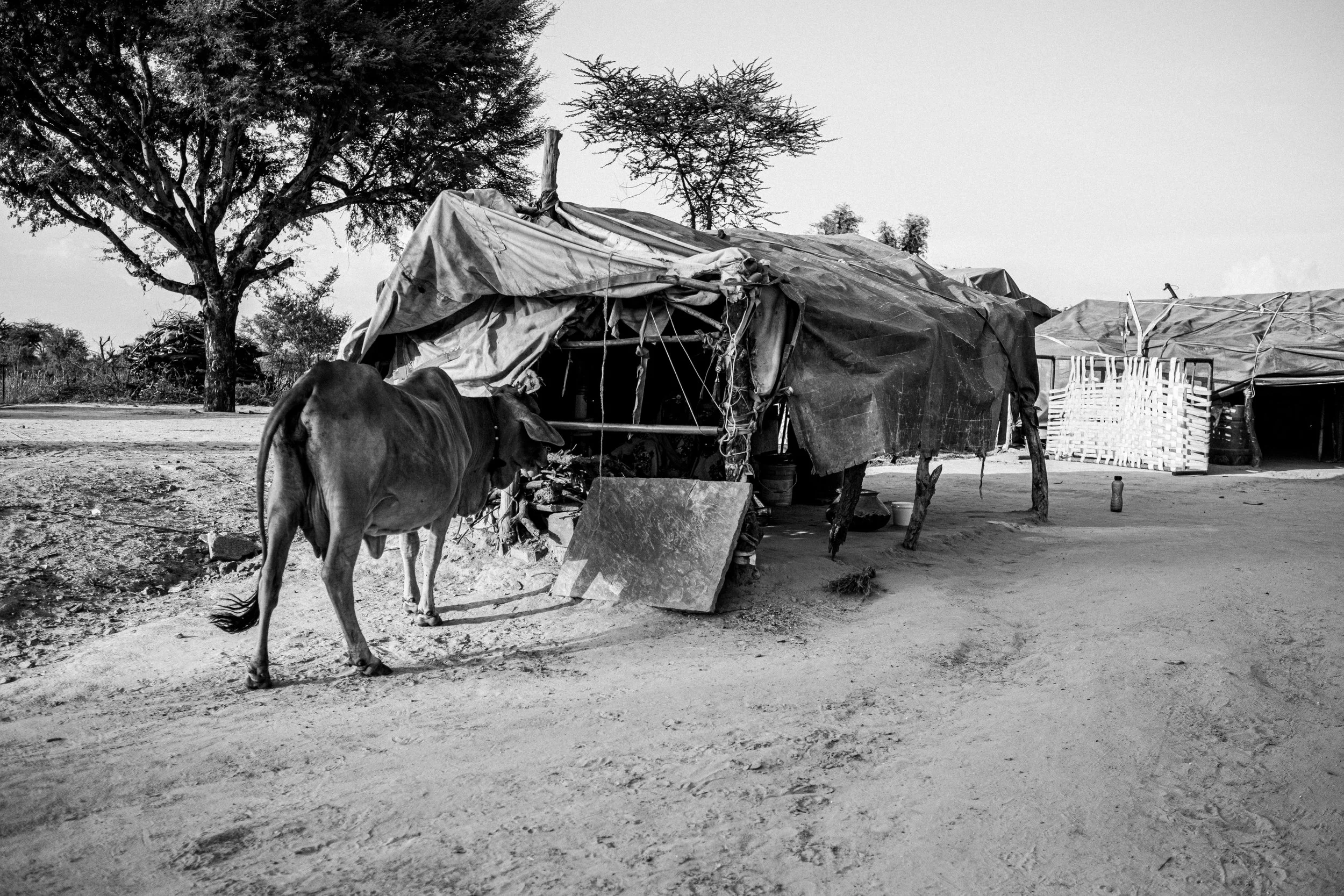
Who know if the clouds dream.
Life in the villages of Rajasthan
The villages were located outside the city of Jaisalmer, in what is the second largest desert in the world, the Thar Desert, toward the western border with Pakistan. Jaisalmer had been a mirage: an ancient fort the color of golden sand, with its temples, which seemed to be carved by angels. Outside the fort, the streets blend and disappear into the desert, cradle of death, where carcasses rest and plants wither. In this place, men have decided to abandon their own existences, accepting that one day they will be swept away by the scorching wind, like sand in time. Outside the knowable world and the infernal chaos of the cities, everything returns to its original and natural form. The clouds once again hide the sun and filter its light, the trees cast shade and offer shelter from the heat of the desert. The original sin of men, who have tried to dominate nature and its children, does not apply to those who live in these lands. Here men accompany the sun until its setting, passing through the seasons and adapting to the nature that changes. Here things remain eternal.
The houses in the villages were dark and small; the light, given by the fire faintly illuminating the interiors, revealed the dust floating in the air. The steep thatched roofs of hay and straw offered shelter from the heat. The smell of chai mingled with that of the bidi smoked by the head of the family - typical Indian cigarettes made of pure tobacco rolled in a dried leaf. One of these dwellings was particularly narrow and bare, with walls darkened by smoke, as if coated with oil seeping down them. Every part of it seemed steeped in stillness, in silence. In the corners of the room, shadows stretched out and absorbed the scarce light, timidly revealing that subtle balance between the visible and the invisible.
We were invited to sit on the floor with the family gathered around the hearth. We drank chai, then smoked a few cigarettes, communicating with gestures or the few words we could share. We spoke of nothing in particular, only of the beauty of the moment and the distant place we had come from, a land unknown to them. In that small room, everything seemed in its rightful place; each thing, in fact, had its own purpose. Far from the excess of the world we know, the essential nature of matter takes on a different meaning, allowing one to listen to the spirit and the very essence of things.
Excerpt from the chapter ‘Who Knows if the Clouds Dream’ in the book Akasha आकाश by Piero Corvo, texts by Ludovica Crescente.
Piero Corvo - Villages
Rajasthan, India. 2024.
All photos here:
Follow my journey.

































